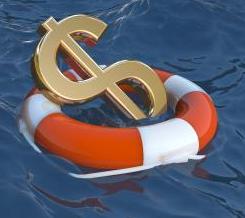 The end of November marked the official end of hurricane season, yet recovery efforts continue. All told the 2012 hurricane season had 19 named storms and 10 hurricanes develop.
The end of November marked the official end of hurricane season, yet recovery efforts continue. All told the 2012 hurricane season had 19 named storms and 10 hurricanes develop.
Despite the ongoing multi-state recovery and relief effort associated with Superstorm Sandy, the U.S. was fortunate that only three tropical storms and one hurricane made landfall in 2012.
Forecasters accurately predicted 12-17 named storms including 5-8 hurricanes. The take away message from the 2012 hurricane season is homeowners and renters should take into account their risks and consider the purchase of flood insurance, according to the Property Casualty Insurers Association of America.
“Superstorm Sandy and the 2012 hurricane season serve as an important reminder that residents must not only prepare physically for natural disasters, but also financially. Many consumers do not fully understand what is and what is not covered in a basic homeowners insurance policy,” Christopher Hackett, PCI director for personal lines, said in a statement. “It is vital that residents create a family disaster plan and maintain an emergency supply kit, but it is equally important for consumers to review their insurance policy with their agent or company, complete a home inventory and consider the risk of flooding.”
Initial estimates of insured losses from Superstorm Sandy range up to $20 billion, which would make this storm one of the most costly storms in U.S. history. The National Flood Insurance Program projected that as of mid-November they received 143,000 claims in all states affected by Sandy with a cost up to $12 billion.
“The 2012 Hurricane Season will go into the history books as very active year for tropical storms. Sandy demonstrates that just one storm changes lives, neighborhoods and local economies,” Hackett said. “This is an important lesson to learn so consumers take the steps now to prepare physically and financially for the next time Mother Nature takes control.”
This year also marked the 20th anniversary of Hurricane Andrew, which made landfall in Florida on August 24, 1992. This Category 5 mega-storm also hit Louisiana and other parts of the southeastern U.S. To date, Andrew ranks as the second-most costly hurricane in U.S. history causing insured and uninsured property damage of $26.5 billion (or $43.3 billion in 2012 dollars).
“In the years following Hurricane Andrew insurers had made several noteworthy advancements in how they prepare for large scale disasters and how they work with their policyholders to recover and rebuild after an event,” Hackett said. “Right now insurers are putting those lessons to good use as they work to meet the need of customers impacted by Superstorm Sandy. Commercial, home and auto insurers are helping residents in New Jersey, New York and elsewhere relocate to temporary residences and begin the process of rebuilding.”
Hurricane forecasters note that the U.S. continues to be in a well-established climate pattern in an ongoing era of high activity for Atlantic hurricanes that began in 1995. Since 1995, more than 70 percent of hurricane seasons have been above normal, including 2012. Historically, high-activity eras have lasted 25 – 40 years, with the previous era occurring from the mid-1930s until 1970.
“The National Oceanic Atmospheric Administration will release their predictions for the 2013 hurricane season in May,” Hackett said. “Given that we will remain in a climate pattern of high hurricane activity, residents and businesses should make financial preparedness a priority.”
PCI is composed of more than 1,000 member companies, representing the broadest cross-section of insurers of any national trade association. PCI members write over $190 billion in annual premium, 40 percent of the nation’s property casualty insurance.
Member companies write 46 percent of the U.S. automobile insurance market, 32 percent of the homeowners market, 38 percent of the commercial property and liability market, and 41 percent of the private workers compensation market.











